Project Spotlight: Honey Brook Animal Hospital
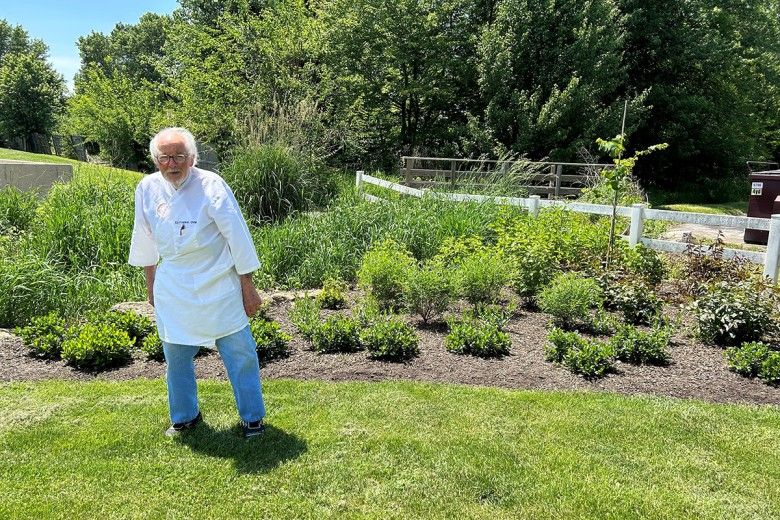
Peek inside a recent project to help protect water quality downstream by addressing stormwater drainage issues at Honey Brook Animal Hospital, located at the headwaters of the Brandywine Creek.
Several years ago, Brandywine Conservancy and Brandywine Red Clay Alliance were contacted by the owner of Honey Brook Animal Hospital in Honey Brook, Pennsylvania. The landowner, Dr. Frankel, had been concerned about stormwater drainage issues on his property, including “suspicions that this trickle from out of the ground could well be part of the Brandywine Creek in origin.” With the occurrence of more frequent and extreme weather events, many are observing and experiencing localized drainage or flooding issues throughout our watershed.
Dr. Frankel’s suspicions were correct. Honey Brook is situated at the headwaters of the Brandywine Creek Watershed, meaning that what enters the waterways here can have an impact on those downstream all the way to the City of Wilmington, Delaware. The Conservancy has completed an extensive list of projects in the headwaters of the Brandywine, but these have primarily been focused on best management practices on agricultural properties. With the Honey Brook Animal Hospital project, we utilized Green Stormwater Infrastructure (GSI) best practices to address Dr. Frankel’s stormwater concerns.
GSI is a form of stormwater management that takes advantage of the natural water cycle by promoting infiltration at the source of stormwater runoff. Unlike gray (think concrete and man-made materials) stormwater infrastructure—designed to move stormwater as quickly as possible—GSI aims to treat stormwater at its source and then slowly and naturally absorb and filter it through native vegetation into the soil and ultimately into the local groundwater and streams. Compared to highly engineered gray conveyance systems, GSI is cost-effective, resilient, and provides communities with enhanced aesthetics and natural resource benefits. In addition to effectively managing stormwater, GSI also helps filter air pollutants, regulates temperatures, sequesters carbon, provides wildlife habitat, and reduces energy and water demands.
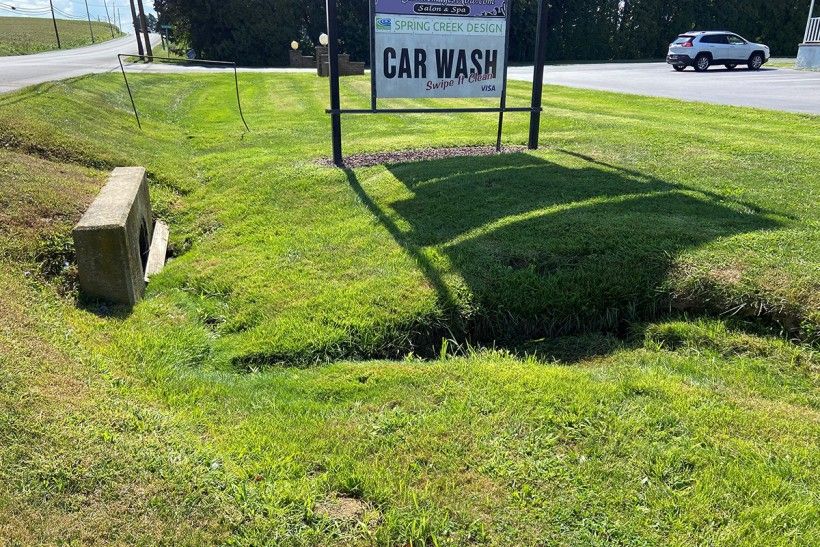
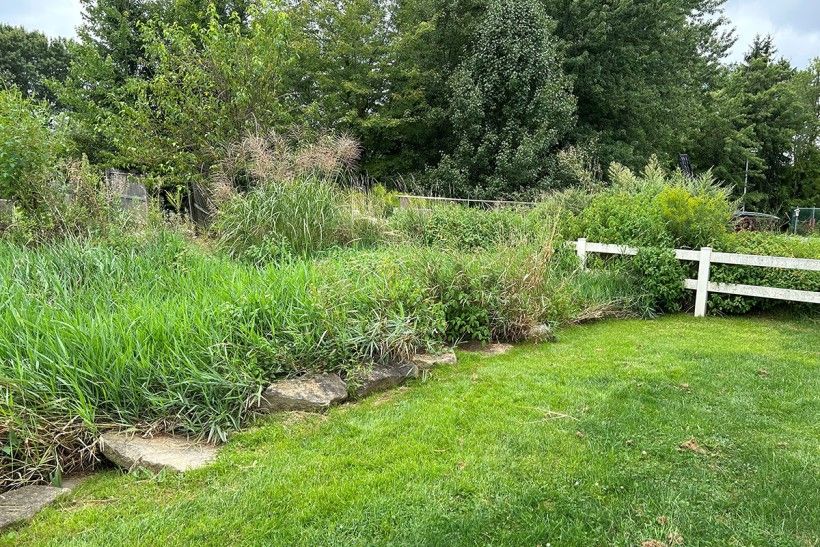
The project at the Honey Brook Animal Hospital was broken into two phases. Phase I included the re-grading and planting of a swale which carries stormwater and runs through the property, under Route 322, and feeds into the West Branch of the Brandywine. A design plan was drawn up by our partner, Natural Lands, which prescribed the planting of over 260 native plants, 445 native grasses, and 7 native trees to help infiltrate and slow down excess stormwater runoff from the property.
Phase I
Phase I of this project was included in Honey Brook Township and Honey Brook Borough’s joint Municipal Separate Storm Sewer System (MS4) Program, which falls under the Clean Water Act. This program addresses runoff pollution originating from impervious surfaces in more developed areas which will eventually end up in our waterways. The MS4 program also requires municipalities to implement several control strategies to help address stormwater issues.
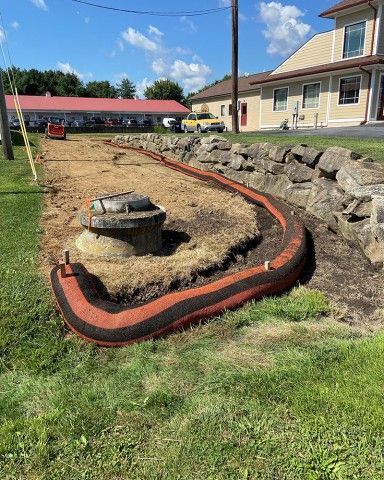
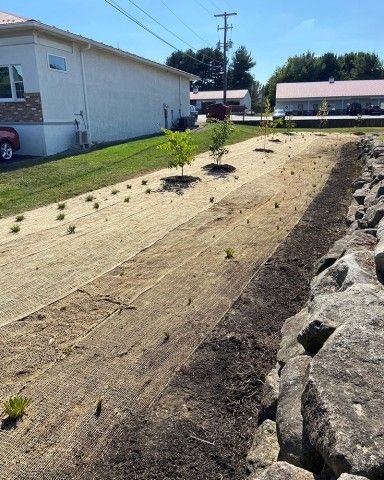
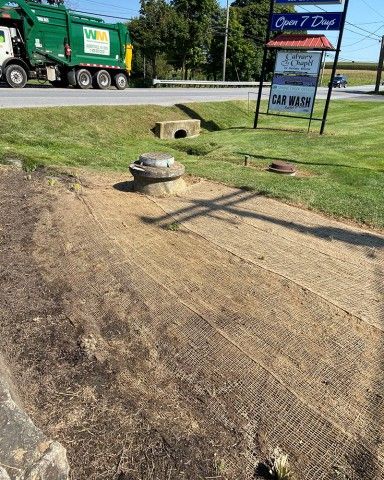
Phase II
This past spring, Phase II of this project was completed. Natural Lands once again prepared the design plan which included the installation of almost 100 native perennial plant plugs and several native trees. In addition to being located on a very busy street, the Animal Hospital is neighbored by a gas station and receives additional runoff from this property.
The second phase included the use of biochar as a soil amendment along the property line to assist in capturing this potentially contaminated runoff from the gas station. Biochar is a carbon-rich material produced from the pyrolysis (heating organic materials in the absence of oxygen) of organic matter, such as wood chips, corn stalks, or even manure. When added to soil, biochar can assist in binding pollutants in the soil, limiting their ability to be carried toward surface and/or groundwater, it also enhances soil fertility by improving nutrient retention, improves soil moisture, and promotes beneficial microbial activity. While the use of biochar is not a new practice—it has been around for thousands of years—it has recently become more widely used in the agricultural sector and in gardening practices as a beneficial soil amendment.
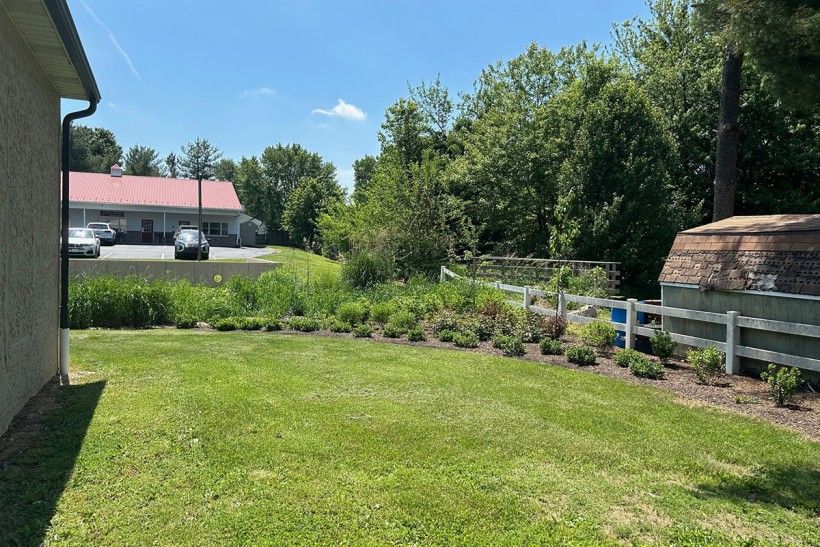
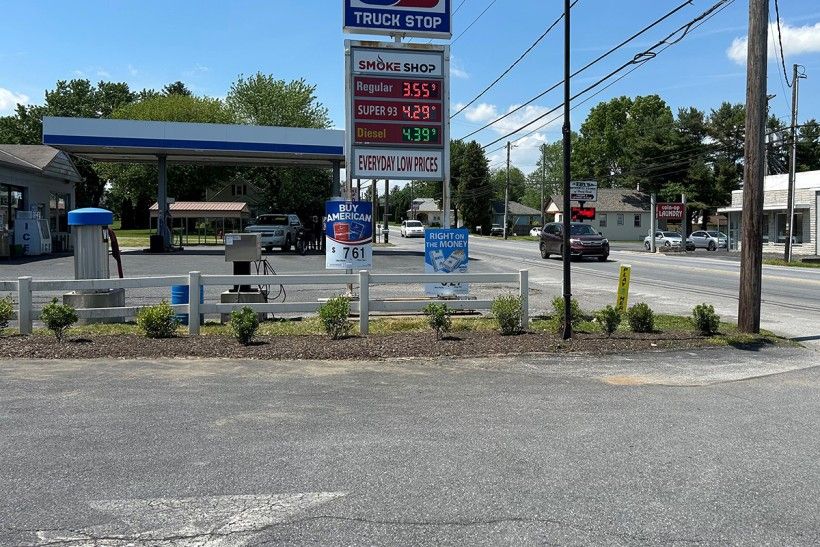
This small project not only provides stormwater mitigation but provides aesthetic benefits as well, as can clearly be seen in these photos. According to Dr. Frankel, “We are already seeing wildlife coming back to add to the beauty and practicality of what the Conservancy has created. I would encourage other landowners in this region to imagine what could be done in their corner of the world.” With proper care and maintenance, small projects such as these will contribute to cleaner water throughout the Brandywine Watershed for many years to come.
The Conservancy has secured additional funds from the Dockstader Foundation, National Fish and Wildlife Foundation, and Pennsylvania Department of Environmental Protection Growing Greener to continue this valuable GSI work on other commercial, institutional, or municipal lands in both the Red Clay and White Clay Creek Watersheds in southern Chester County. This project would not be possible if it wasn’t for additional funding contributed by our project partners, Brandywine Red Clay Alliance, Natural Lands, and Honey Brook Borough & Township. Collaboration amongst our peers is paramount in protecting our watershed.